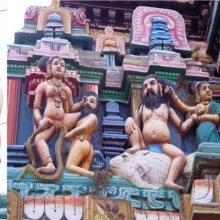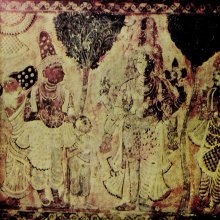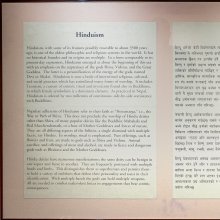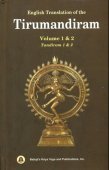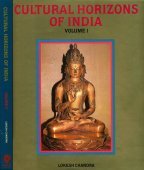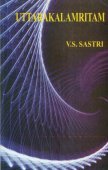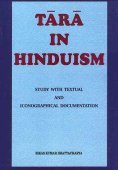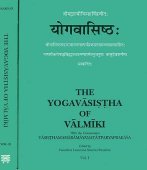Shaiva, Śaiva, Śaivā: 21 definitions
Introduction:
Shaiva means something in Hinduism, Sanskrit, Marathi, Jainism, Prakrit, Hindi. If you want to know the exact meaning, history, etymology or English translation of this term then check out the descriptions on this page. Add your comment or reference to a book if you want to contribute to this summary article.
Shaiva has 20 English definitions available.
The Sanskrit terms Śaiva and Śaivā can be transliterated into English as Saiva or Shaiva, using the IAST transliteration scheme (?).
Alternative spellings of this word include Shaiv.
Images (photo gallery)
Languages of India and abroad
Sanskrit dictionary
[Deutsch Wörterbuch]
Source: Cologne Digital Sanskrit Dictionaries: Böhtlingk and Roth Grosses Petersburger WörterbuchŚaiva (शैव):—1.
1) adj. zu Śiva in Beziehung stehend, von ihm kommend, ihm geweiht u.s.w.: śūla [Rāmāyaṇa 1, 29, 6.] dhanus [66, 19.] devakula [Kathāsaritsāgara 10, 30.] āyatana [40, 89.] mantrāḥ [WEBER, Rāmatāpanīya Upaniṣad 355.] [Oxforder Handschriften 91], a, [23.] purāṇa [Viṣṇupurāṇa.3,6,19.] [Mārkāṇḍeyapurāṇa S. 659, Z. 3.] [WEBER, KṚṢṆAJ. 234.] [Oxforder Handschriften.8,a,1. 30,a, No. 75. 59,a,37. 65,a,34.b,22. 271,a,5.] [Weber’s Indische Studien.1,18,8.] [WILSON, Sel. Works 1,210.] pañcarātra [PAÑCAR. 1, 1, 57.] śāstra oder n. mit Ergänzung dieses Wortes [Weber’s Verzeichniss No. 810.] [Oxforder Handschriften 46], a, [4. 91], a, [17. 247], a, [Nalopākhyāna 3. 276], b, [15.] tantra [108], b, [No. 169.] dass. ohne tantra [104,a,26.] —
2) m. a) patron. von Śiva [Pāṇini’s acht Bücher 4, 1, 112.] [Vopadeva’s Grammatik 7, 1. 10.] — b) ein Verehrer Śiva’s (auch Bez. einer best. Śivaitischen Secte) [Trikāṇḍaśeṣa 3, 1, 23.] [WILSON, Sel. Works] passim; [Colebrooke 1, 196. fgg.] [Prabodhacandrodaja 86, 6.] [WEBER, Rāmatāpanīya Upaniṣad 335.] [Weber’s Verzeichniss No. 543. 616.] [Oxforder Handschriften 16], a, [Nalopākhyāna 1. 74], b, [19. 92], a, [18. 242], b, [No. 599. 247], b, [2 v. u. 248], a, [7. 258], b, [3.] [Vopadeva’s Grammatik 3, 132. 7, 23.] darśana [SARVADARŚANAS. 80. fgg.] der Śivait als ein Sohn Vasiṣṭha’s angesehen [Oxforder Handschriften 46], a, [6. 276], b, [16.] — c) Nomen proprium des 5ten schwarzen Vāsudeva [Hemacandra’s Abhidhānacintāmaṇi 696.] — d) Bez. zweier Pflanzen: Stechapfel und = vasuka [Rājanirghaṇṭa im Śabdakalpadruma] —
3) f. ī Name der Göttin Manasā [Oxforder Handschriften 24,b,38.] —
4) n. Glück, Wohlfahrt: tyajāśvaśaivam [Bhāgavatapurāṇa 3, 1, 13.] — Vgl. vīra .
--- OR ---
Śaiva (शैव):—2. n. = śaivāla [Śabdacandrikā im Śabdakalpadruma]
--- OR ---
Śaiva (शैव):—3. fehlerhafte Schreibart für śaiba .
Sanskrit, also spelled संस्कृतम् (saṃskṛtam), is an ancient language of India commonly seen as the grandmother of the Indo-European language family (even English!). Closely allied with Prakrit and Pali, Sanskrit is more exhaustive in both grammar and terms and has the most extensive collection of literature in the world, greatly surpassing its sister-languages Greek and Latin.
See also (Relevant definitions)
Starts with (+80): Saivala, Saivan, Shaiva madhava, Shaiva-diksha, Shaiva-siddhanta, Shaivabhashya, Shaivacapa, Shaivacarya, Shaivacarya-kshetra, Shaivachapa, Shaivacharya, Shaivadarshana, Shaivadharmakhandana, Shaivadharmamandana, Shaivadhibhumi, Shaivadhikalinga, Shaivadikshavidhana, Shaivagama, Shaivagamasarasamgraha, Shaivagamashaucadipika.
Ends with (+4): Adishaiva, Amtarashaiva, Anadishaiva, Antyashaiva, Anushaiva, Ashaiva, Avamuktashaiva, Avantarashaiva, Avimuktashaiva, Gopinatha shaiva, Kashmirashaiva, Krishna shaiva, Mahashaiva, Margashaiva, Mishrashaiva, Nilakantha shaiva, Padashaiva, Pravarashaiva, Purvashaiva, Samanyashaiva.
Full-text (+4768): Shaivism, Somasiddhanta, Ekanetra, Somasiddhantin, Pravarashaiva, Shaivagama, Antyashaiva, Aurdhvasrotasika, Agama, Shaivam, Virashaiva, Shivaprakasha, Hara, Atinakartta, Vratavarjita, Kalakarnimuttirai, Kalamukar, Tiyakamuttirai, Ekarudra, Caivavati.
Relevant text
Search found 134 books and stories containing Shaiva, Śaiva, Saiva, Śaivā; (plurals include: Shaivas, Śaivas, Saivas, Śaivās). You can also click to the full overview containing English textual excerpts. Below are direct links for the most relevant articles:
Shat-cakra-nirupana (the six bodily centres) (by Arthur Avalon)
A History of Indian Philosophy Volume 5 (by Surendranath Dasgupta)
Part 1 - The Literature and History of Southern Śaivism < [Chapter XXXIV - Literature of Southern Śaivism]
Part 1 - History and Literature of Vīra-śaivism < [Chapter XXXV - Vīra-śaivism]
Part 1 - The Śaiva Philosophy in the Śiva-mahāpurāṇa < [Chapter XXXVII - The Śaiva Philosophy in the Purāṇas]
Hindu Pluralism (by Elaine M. Fisher)
The Public Theologians of Early Modern South India < [Chapter 1 - Hindu Sectarianism: Difference in Unity]
Vaidika and Śaiva < [Chapter 1 - Hindu Sectarianism: Difference in Unity]
The Practical Applications of Textual Criticism < [Chapter 3 - Constructing Sectarian Identities in Early Modern South India]
The Lingayats-Their Religion and Literature < [May 1937]
Ananda Coomaraswamy and the Tamil < [July – September, 1980]
Bhaavas in Vaishnavism and Saivism: A Comparative Study < [October – December, 1981]
Lakulisha-Pashupata (Philosophy and Practice) (by Geetika Kaw Kher)
Traces of Lakulisa-Pasupata order in North India < [Chapter 2 - Spread and Transition]
Locating the Lakulisa-Pasupata rites in the world of Saivite rituals < [Chapter 3 - The Ritualistic Context]
Kalamukhas and Virasaivas: The present day tradition < [Chapter 2 - Spread and Transition]
Kavyamimamsa of Rajasekhara (Study) (by Debabrata Barai)
Part 4.1 - Nature and divisions of Vākya (literary speech) < [Chapter 5 - Analyasis and Interpretations of the Kāvyamīmāṃsā]
Part 5 - Rājaśekhara’s Province and Religion < [Chapter 1 - Introduction]
Part 7.11 - Poetic conventions regarding to the Colours < [Chapter 5 - Analyasis and Interpretations of the Kāvyamīmāṃsā]
Related products
(+1 more products available)
